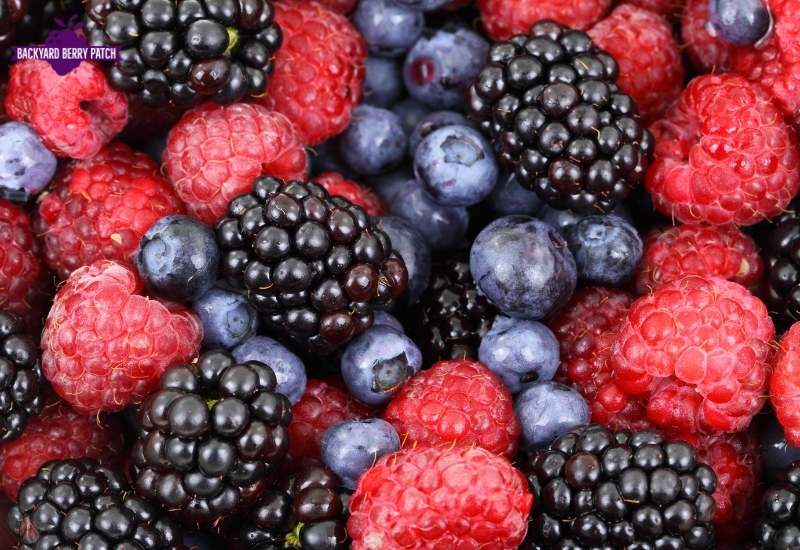Growing raspberries in Texas can be a sweet and rewarding experience. With the right varieties and care, you can enjoy fresh berries from your own backyard.
The best raspberries to grow in Texas are heat-tolerant varieties like ‘Dorman Red’, ‘Bababerry’, and ‘Heritage’.
These cultivars can withstand the hot Texas summers and still produce tasty fruit.
Raspberries are packed with vitamin C and other nutrients. They’re a great addition to your garden, offering large yields when properly cared for. You’ll love harvesting these juicy berries throughout the growing season.
Texas gardeners can succeed with raspberries by planting in late winter or early spring. This gives the plants time to establish before the heat sets in.
To get started, you’ll want to prepare your soil well. Raspberries prefer well-drained, acidic soil. Adding organic compost can help create the perfect growing conditions.
With the right setup, you’ll be enjoying homegrown raspberries in no time!
Texas Climate And Soil Overview
Texas has a warm climate that can be tough for raspberries. You’ll face hot summers and mild winters. The state’s weather varies from humid in the east to dry in the west.
Soil in Texas is often alkaline. This can be a problem for raspberries, which like slightly acidic soil. You’ll need to test your soil’s pH level before planting.
Well-drained soil is a must for raspberry plants. If your soil is heavy clay, you might need to create raised beds to improve drainage.

Adding organic matter to your soil can help. This improves both drainage and nutrient content. You can use compost or aged manure.
Sun exposure is important for raspberries. Make sure your plants get plenty of direct sunlight each day.
Texas often faces drought conditions, so plan for irrigation, especially during hot, dry spells.
Remember, different parts of Texas have different conditions. North Texas has colder winters, while Central Texas is hotter and drier. Adjust your raspberry care based on your specific location.
Recommended Thornless Raspberry Varieties In Texas
Growing raspberries in Texas can be tricky, but with the right varieties, you can enjoy a bountiful harvest. Thornless raspberries are a great choice for easy picking and maintenance.
Here are some thornless raspberry varieties that do well in Texas:
• Heritage: This everbearing variety produces fruit in summer and fall. It’s known for its sweet flavor and good disease resistance.
• Caroline: Another everbearing option, Caroline raspberries offer high yields and excellent flavor. They’re also heat-tolerant, making them ideal for Texas weather.
• Tulameen: While not completely thornless, this variety has very few thorns. It produces large, tasty berries and can handle warmer climates.
• Jewel: This black raspberry variety is nearly thornless and produces firm, flavorful berries. It’s a good choice for Texas gardeners looking for something different.
When you grow raspberries in Texas, consider planting in raised beds to improve drainage. Add organic compost to your soil and use mulch to retain moisture.

Recommended Thorny Raspberry Varieties In Texas
When growing raspberries in Texas, you’ll want to choose varieties that can handle the heat.
Thorny raspberries often do well in the Lone Star State’s climate.
One of the best options is Dorman Red. This variety is tough and can withstand Texas summers. You’ll love its sweet flavor and how well it produces fruit.
Here are some tips for growing Dorman Red:
- Plant in well-drained soil
- Water regularly, especially during dry spells
- Prune in late winter for best results
To keep your plants healthy, watch out for common pests like aphids and spider mites.
Regular checks can help you catch problems early.
Raspberries need some care to thrive in Texas. But with the right variety and a little attention, you can enjoy fresh berries from your own garden.
Try planting Dorman Red along with other heat-tolerant fruits. This way, you’ll have a diverse and productive garden that can handle Texas weather.

Leave a Reply